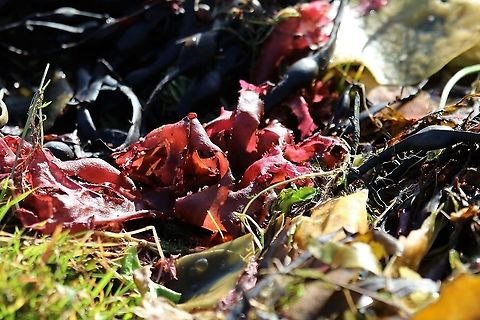
Appearance
The erect frond of dulse grows attached by its discoid holdfast and a short inconspicuous stipe epiphytically on to the stipe of ''Laminaria'' or to rocks.The fronds are variable in shape and colour from deep rose to reddish purple and are rather leathery in texture. The flat foliose blade gradually expands and divides into broad segments ranging in size to 50 centimetres long and 3–8 cm in width which can bear flat, wedge-shaped proliferations from the edge.
The blade consists of an outer cortex of small cells enclosing a medulla of larger cells up to 0.35 thick.
Distribution
''P. palmata'' is the only species of ''Palmaria'' found on the coast of Atlantic Europe. It can be found from Portugal to the Baltic coasts and on the coasts of Iceland and the Faroe Islands. It also grows on the shores of Arctic Russia, Arctic Canada, Atlantic Canada, Alaska, Japan, and Korea. Records of ''P. palmaria'' from California are actually of ''Palmaria mollis''.Habitat
''P. palmata'' is to be found growing from mid-tide of the intertidal zone to depths of 20 m or more in sheltered and exposed shores.References:
Some text fragments are auto parsed from Wikipedia.